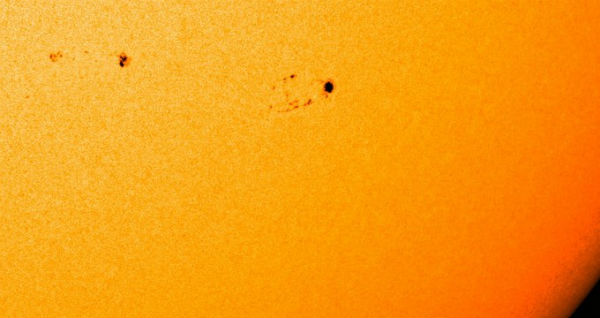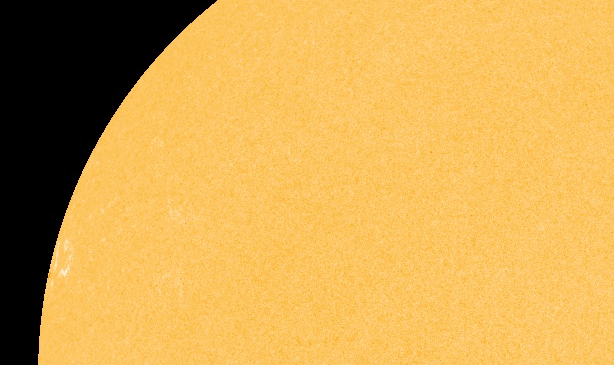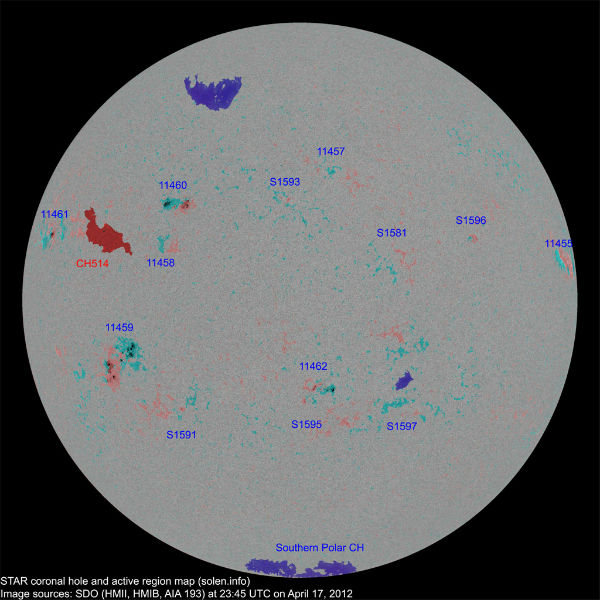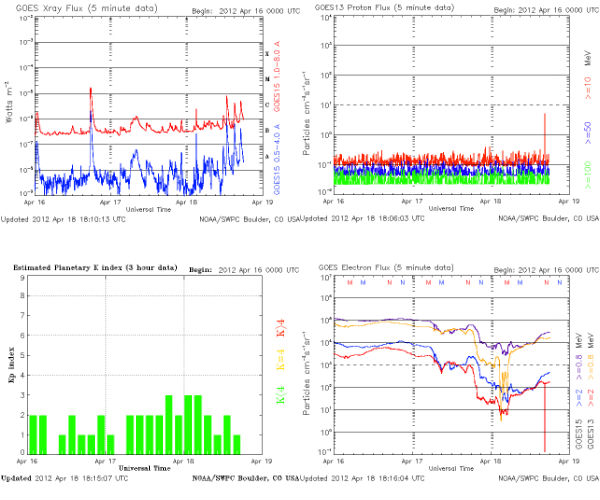New sunspot formation

Solar activity is near moderate levels with C-Class flares being detected around a new sunspot that was quickly formed in the southern hemisphere on Tuesday and was numbered 1462.. Another region is forming just to the west of that location and is currently producing C-Class flares, including a C8.9 at 12:39 UTC Wednesday morning. This new region should be numbered 1463 later today.
All other regions including 1459 and 1460 are currently stable. Sunspot 1455 is now located on the western limb and will soon be out of direct Earth view. There is still a chance for an M-Class flare. The past several days have shown a sharp increase in visible sunspot groups as compared to just last week.

Just to get the impression of this growing sunspot 1460: On April 16th this sunspot did not exist and on April 17th it was twice as big as our planet. The sunspot’s magnetic field is still too simple for producing strong flares, but if the expansion continues it could generate strong flares and coronal mass ejections. There are no large coronal holes on the Earthside of the sun.

3-day Solar-Geophysical Forecast issued Apr 17 22:00 UTC by NOAA/SWPC
Solar Activity Forecast: Solar activity is expected to be low with a slight chance for an M-class flare for the next three days (18-20 April).
Geophysical Activity Forecast: The geomagnetic field is expected to be mostly quiet on days one and two (18-19 April). Quiet to unsettled conditions are expected with a chance for isolated active periods on day three (20 April) due to a recurrent Solar Sector Boundary Crossing (SSBC).
Joint USAF/NOAA Report of Solar and Geophysical Activity (17 Apr 2012)
Solar activity has been low for the past 24 hours. A long duration C1 flare was observed from new Region 1461 (N13E66) at 17/0809Z. An associated CME became visible in LASCO C2 imagery at 17/0800Z but does not appear to be Earth-directed. A filament eruption occurred at approximately 17/1330Z near N24W40. The associated CME was first visible in LASCO C2 imagery at 17/1424Z but is not expected to be geoeffective. New Region 1460 (N16E26) was also numbered overnight and is considered a Dso-beta type spot group. Region 1459 (S15E40) has shown a significant decrease in areal coverage and is now a Dao-beta type spot group. Solar activity is expected to be low with a slight chance for an M-class flare for the next three days (18-20 April).
The geomagnetic field was mostly quiet during the past 24 hours. The greater than 2 MeV electron flux at geosynchronous orbit reached high levels during the period. The geomagnetic field is expected to be mostly quiet on days one and two (18-19 April). Quiet to unsettled conditions are expected with a chance for isolated active periods on day three (20 April) due to a recurrent Solar Sector Boundary Crossing (SSBC).
Event Probabilities 18 Apr-20 Apr
Class M 20/15/10
Class X 01/01/01
Proton 01/01/01
PCAF green


Commenting rules and guidelines
We value the thoughts and opinions of our readers and welcome healthy discussions on our website. In order to maintain a respectful and positive community, we ask that all commenters follow these rules:
We reserve the right to remove any comments that violate these rules. By commenting on our website, you agree to abide by these guidelines. Thank you for helping to create a positive and welcoming environment for all.